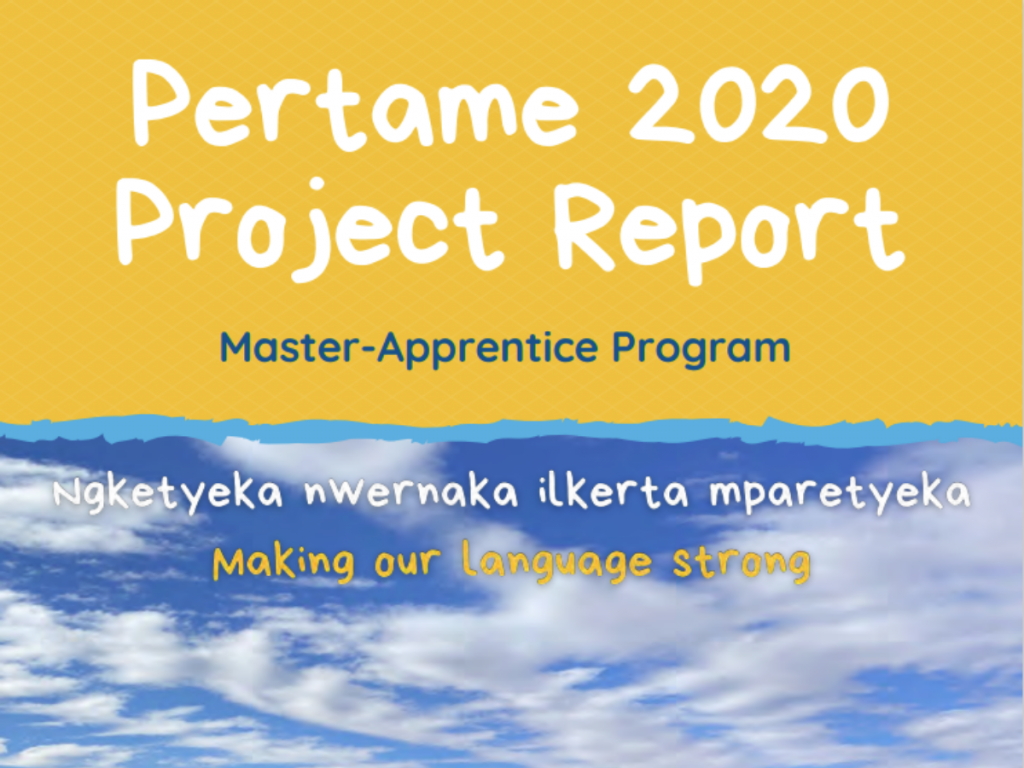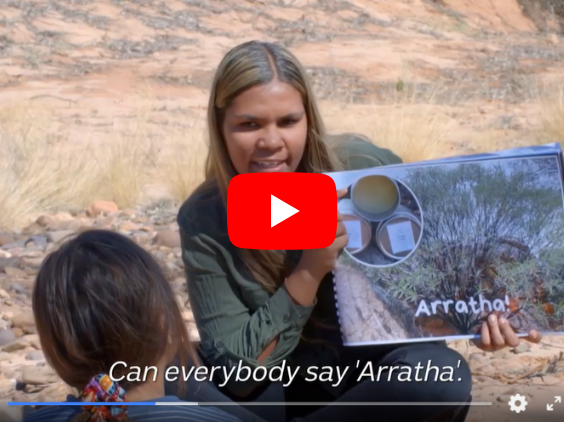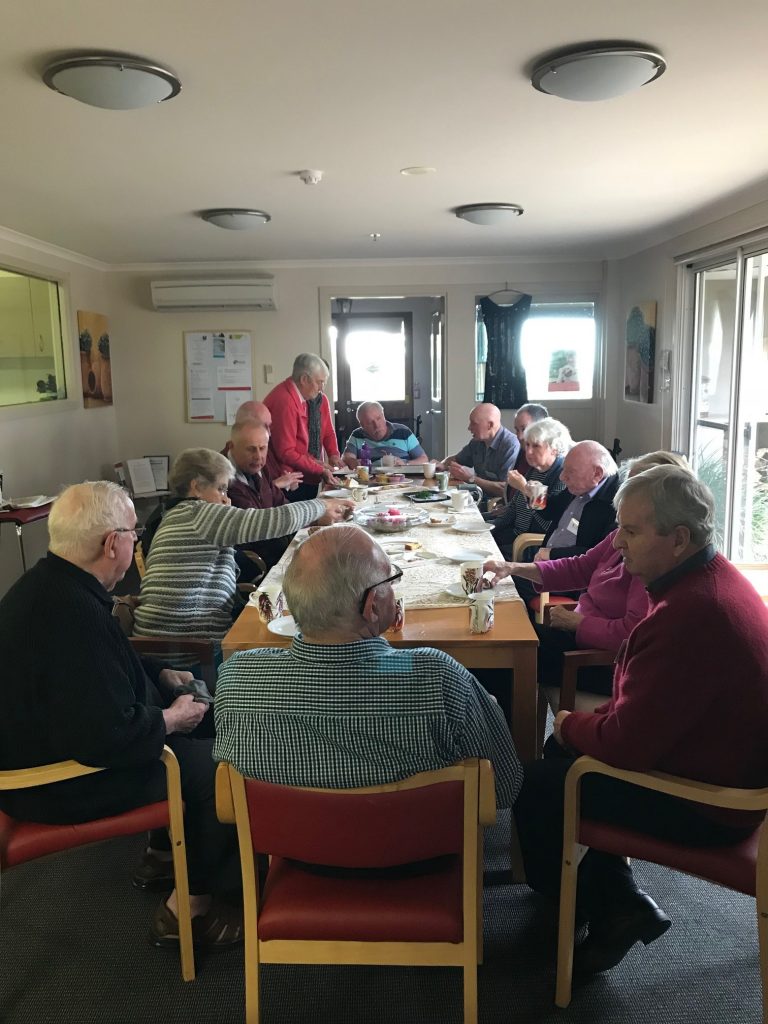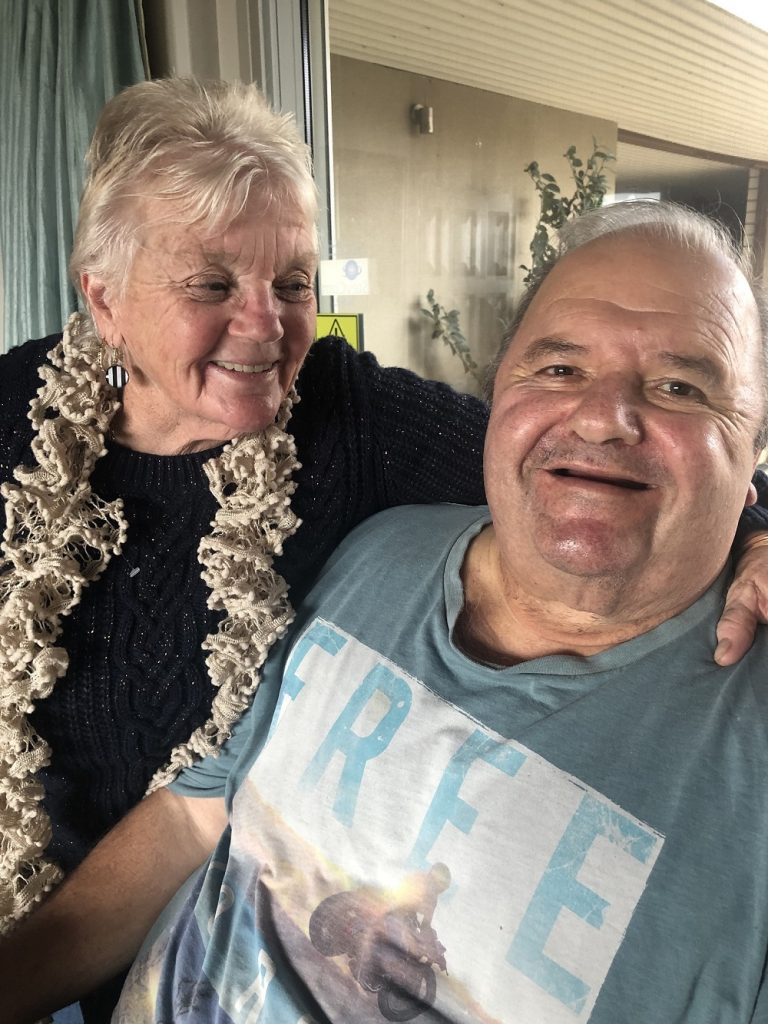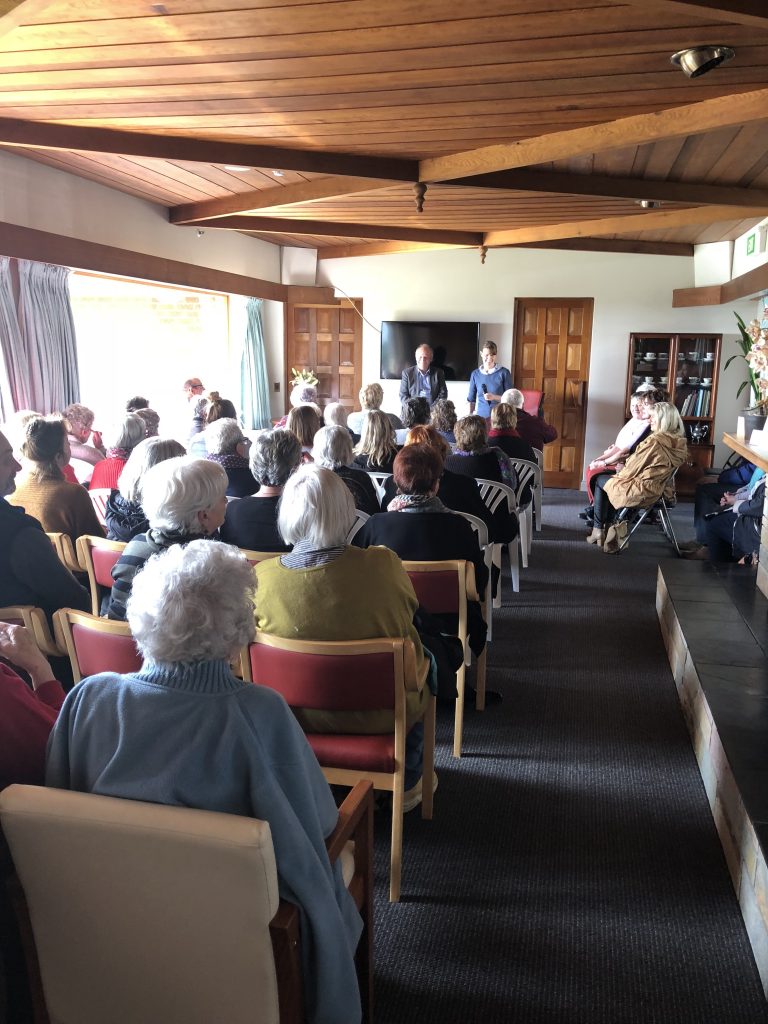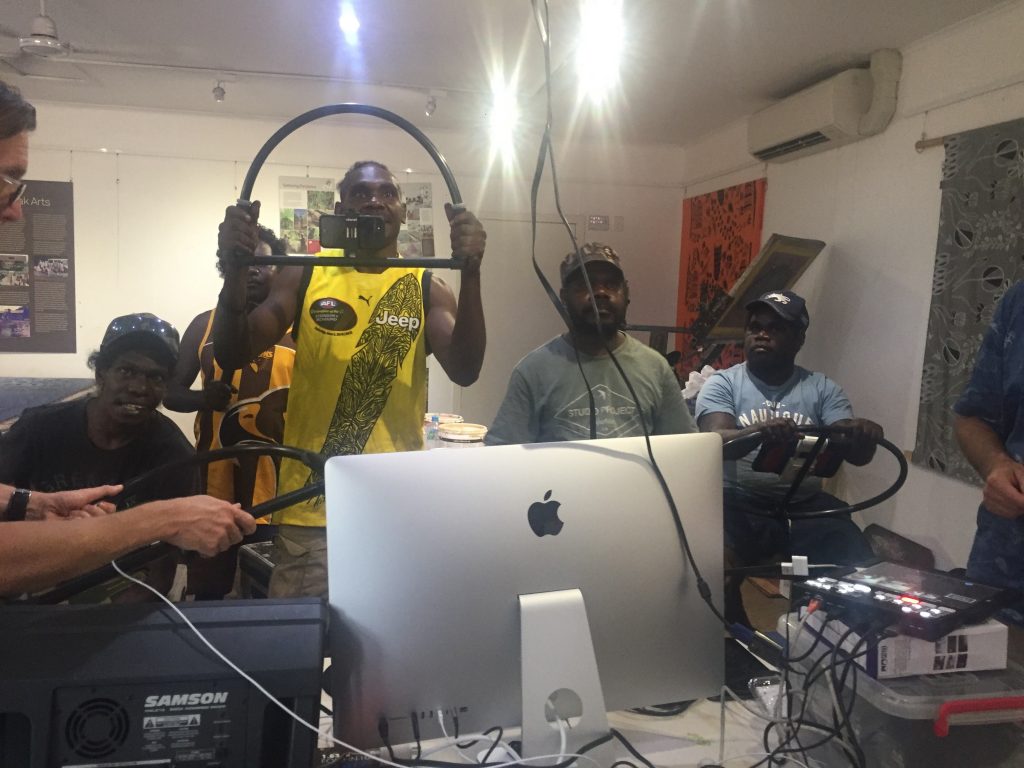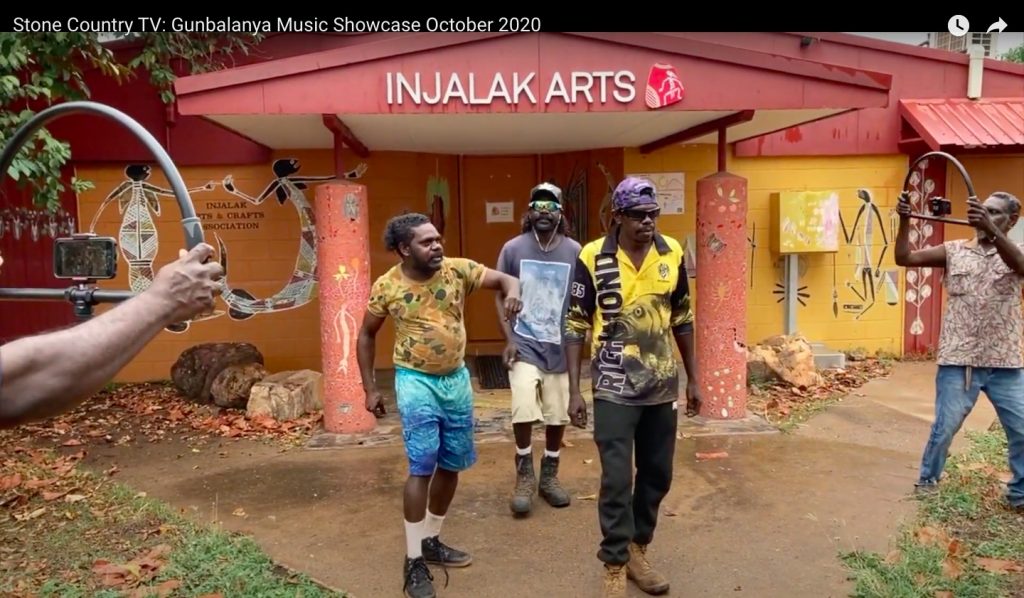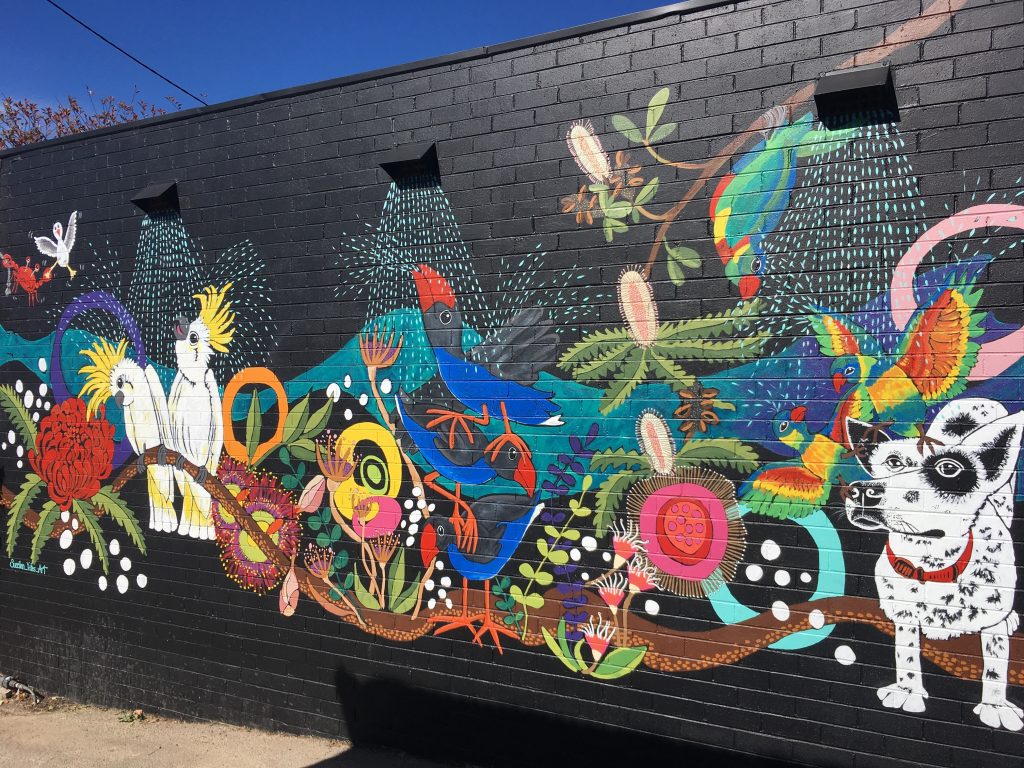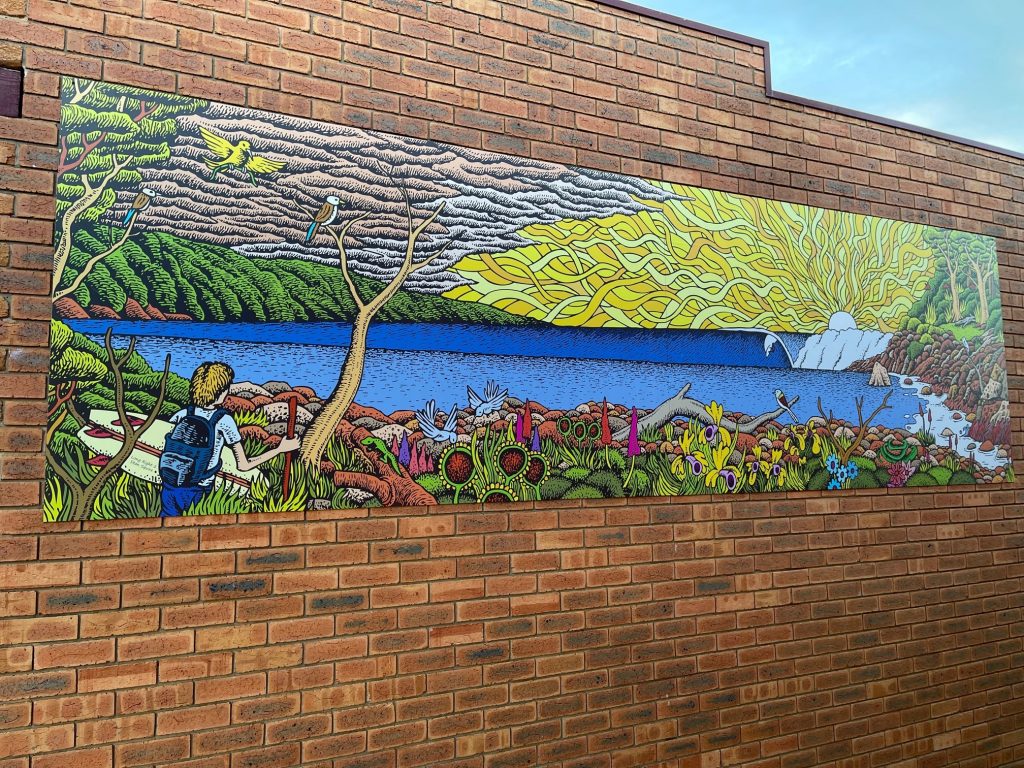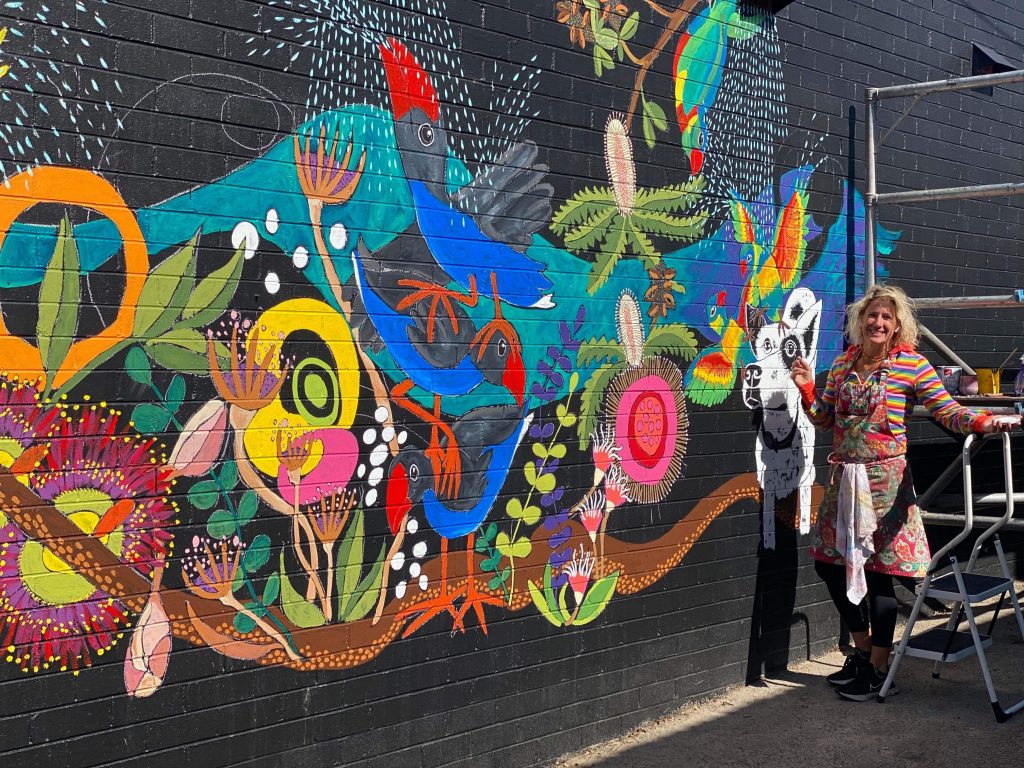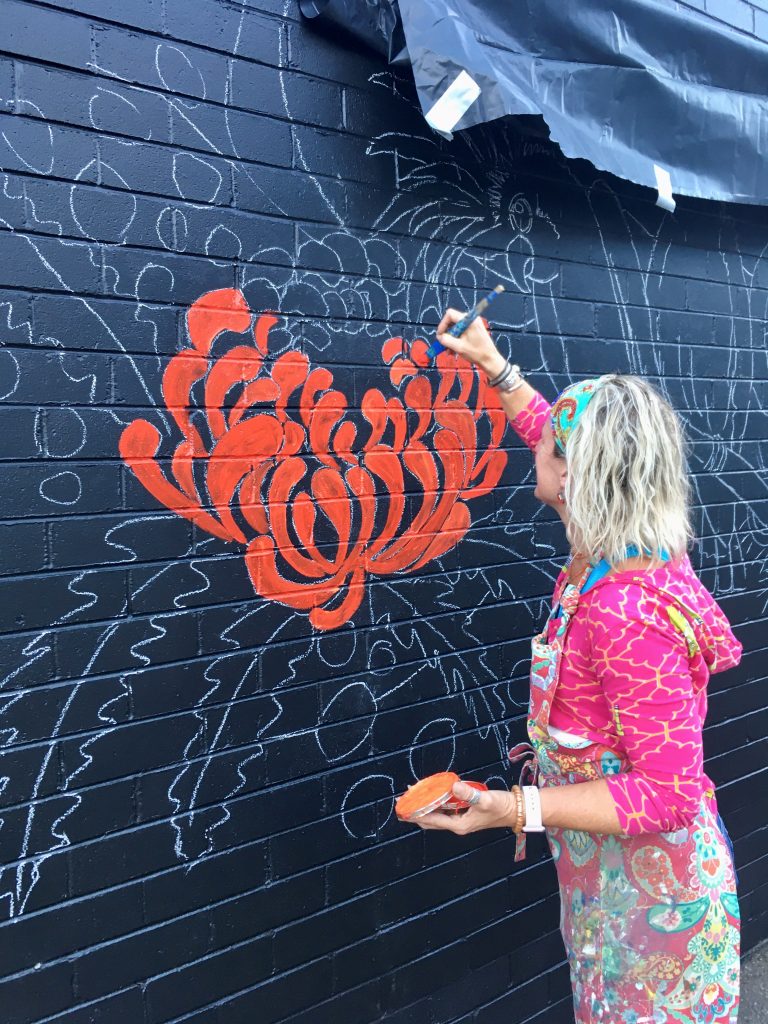Foundation for Rural & Regional Renewal (FRRR)
Nearly $100,000 in grants awarded to local NFPs
Five not-for-profit organisations (NFPs) in the Bay & Basin region are sharing in $99,494 in funding that will strengthen the NFP sector and inter-organisational relationships in Bay & Basin, helping the community to thrive and achieve long-term stability.
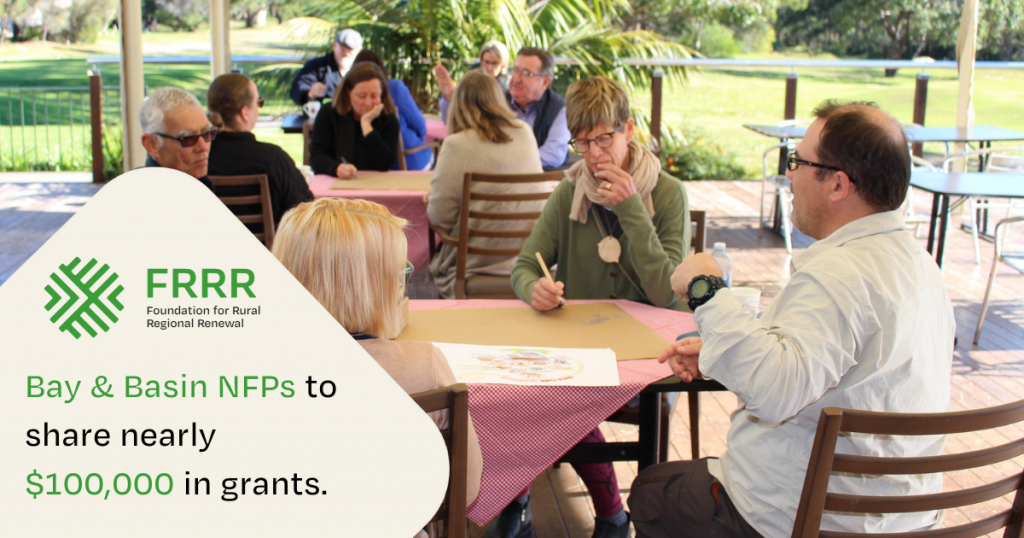
Funded through FRRR’s Investing in Rural Community Futures (IRCF) program, in partnership with the Bendigo Bank Community Enterprise Foundation, these funds will allow Bay & Basin NFPs to develop the tools, resources and skills they have identified they need to achieve longevity and enduring opportunities in their communities.
IRCF is a multi-year grassroots program aimed at building the capacity and connectedness of NFPs in select communities in regional New South Wales. As well as grants, these organisations will receive organisational support and coordination in the form of workshops that will help them to implement more effective systems, processes and training within their organisations.
The five funded initiatives focus on developing strategic and sustainable business skills, technological transformation, and supporting youth and community engagement. These local activities address needs highlighted through a community-led Roadmap, the development of which was facilitated by FRRR.
Natalie Egleton, CEO of FRRR, said that the IRCF program’s expansion into the Bay & Basin region has been a great boost for local communities, with significant investments now being made for the future.
“These not-for-profit organisations are enabling community-led action and resilience through their long-term initiatives.
“It’s wonderful to see local organisations prioritising community engagement and creating safe cultural spaces, particularly for local youth. Like Vincentia High School, which will use their $24,000 grant to help create a safe community space with their integrated community health hub called Walawaani-ngarn (welcome place),” Ms Egleton said.
David Impey, CEO of Bendigo Bank’s Community Enterprise Foundation, said they are pleased to have been able to help expand the IRCF program to include Bay & Basin.
“We’re delighted to be on board with a program that’s making a real and practical difference. Organisations like the Lady Denman Heritage Complex Huskisson will be transformed by their $6,424 grant, as it will allow them to transition from using outdated catalogue software to a more efficient and secure cloud-based method of storage.”
The three other grant recipients in the Bay & Basin region are:
- Sanctuary Point Community Pride Incorporated, Vincentia – Organised Youth Bay and Basin – $26,000 – Support the development of a youth forum and youth-led projects through the engagement of a youth practitioner to connect and support Bay & Basin youth.
- Huskisson Public School Parents and Citizens Association, Huskisson – Equipping the Huskisson P&C for a Viable Future – $13,070 – Enhance the sustainability of the Huskisson P&C through succession planning, development of strategic documents, laptop purchase and insurance costs.
- Bay & Basin Community Resources Limited, Sanctuary Point – Marketing and Communications Connecting BBCR and Communities – $30,000 – Enable Bay & Basin Community Resources to improve their communications and marketing through the employment of a marketing coordinator for six months.
Kate Dezarnaulds, who previously served as FRRR’s Program Manager for IRCF, will be transitioning into an IRCF co-facilitator role to serve the needs of these South Coast NFPs more directly. FRRR is also recruiting for a co-facilitator who identifies as First Nations, to work alongside Ms Dezarnauld. Those interested in applying can contact the FRRR team at https://frrr.org.au/contact-us/.
In addition to Bay & Basin, the IRCF South Coast program is also working in Nowra, Batemans Bay and Ulladulla, with the support of The Snow Foundation and in Junee, Leeton and Nambucca Valley in partnership with the Vincent Fairfax Family Foundation.
For more information about the Investing in Rural Community Futures program visit https://frrr.org.au/ircf-program/.
35 first-responder organisations awarded grants
Thirty-five volunteer emergency services organisations supporting remote, rural and regional communities impacted by the 2019/20 bushfires are sharing $447,323 in grants for projects that will assist in their recovery and strengthen their emergency response capabilities ahead of the 2021/22 bushfire season.
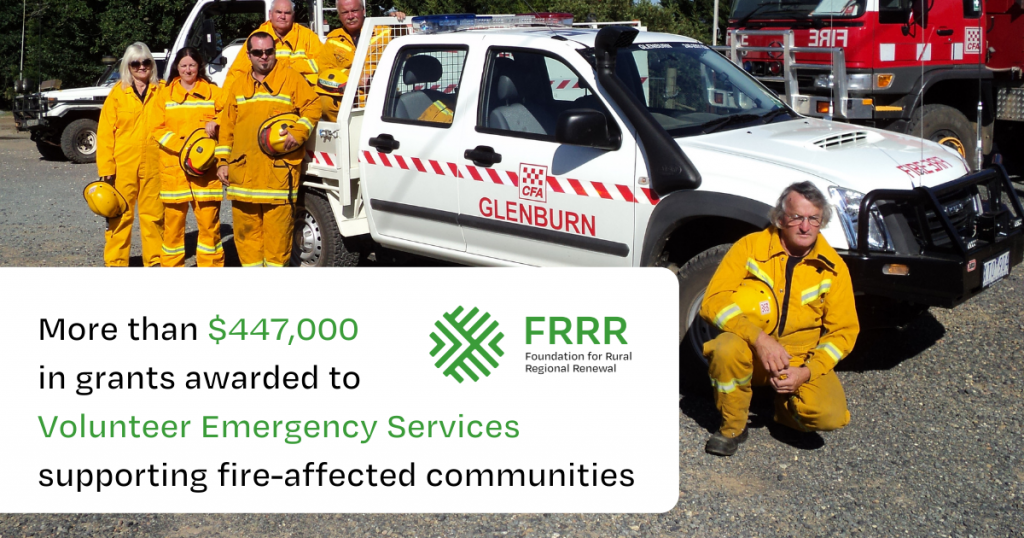
Funded through FRRR’s Volunteer Emergency Services Fund (VESF) program, thanks to a generous private donor, grants range from $2,232 to maintain fire-crew hydration through the installation of a car fridge, to $25,000 to increase access to life saving equipment with the purchase
The VESF supports the ongoing bushfire recovery and preparedness taking place in eligible fire-affected communities across the Australian Capital Territory, New South Wales, Queensland, South Australia, Tasmania and Victoria.
Natalie Egleton, FRRR’s CEO, said that these grants will support rural communities and protect the volunteers who are leading the path to recovery.
“Programs like this are crucial to the long-term resilience of these communities. Providing the necessary resources and support for these volunteers will not only bolster the preparedness of these fire-affected areas but will also enable our volunteers to recover, both physically and mentally, as they continue to serve rural Australia in the safest and most effective ways possible.
“In this round, we saw a lot of requests for support in purchasing and upgrading emergency equipment. Whether it’s additional firefighting trailers, community emergency messaging systems or emergency medical equipment, these organisations will be better equipped to save lives,” says Ms Egleton.
Some of the projects funded this round include:
- Wantagong Bushfire Brigade, NSW – Firefighting trailer and PMR Handheld Radio – $16,188 – Increase firefighting capacity with the provision of an additional tanker trailer and a handheld radio.
- Flinders Peak Rural Fire Brigade, QLD – Flinders Peak Station Security & Access Control – $13,682 – Improve facility access and security for local fire and SES organisations by installing a new integrated security and roller door system.
- Kangaroo Island Wildlife Network, SA – Fire Awareness Session and 4WD training – $5,580 – Build capability and equip a local wildlife organisation to operate effectively in a disaster with fire awareness and 4WD training, and new disaster response equipment.
- Wendoree Park Rural Fire Service, VIC – Wendoree Park Rural Fire Station Generator – $19,854 -Increase emergency power supply capability with the installation of an emergency backup generator ensuring continued access to power supply during emergencies.
- St John Ambulance Australia (Vic) Inc, Vic – Mental Health, Crisis and resilience training for volunteers deployed to bushfire events – $14,250 – Boost first responder wellbeing by delivering Mental Health, Crisis and Resilience training for volunteers deployed to bushfire events.
For more information, visit FRRR’s website – https://frrr.org.au/volunteer-emergency-services-fund-grant-program/. The next, and last, round of this program is expected to open in February, but details will be confirmed in the new year.
The full list of grant recipients and their projects are below.
| Organisation | Project | Location | Grant | |||
|---|---|---|---|---|---|---|
| NEW SOUTH WALES | ||||||
| Bumbalong Valley Progress Association | Bumbalong Community Fire Unit 2021-2022 Strengthen emergency fire response capacity and communication with the provision of smaller mobile water storage solutions, pumps, hoses and radio equipment. | Bumbalong | $19,301 | |||
| Gulgong DC Rural Fire Brigade | Going Digital - A New Age for Gulgong DC RFB Enhance training and communications equipment by upgrading digital equipment to enhance operations. | Gulgong | $25,000 | |||
| Long Flat / Ellenborough Rural Fire Brigade | Kitchen Upgrade Improve kitchen facilities at the local RFS site to provide volunteers and community members with disability access and conditions to support serving safe, healthy food during disaster activations. | Long Flat | $20,503 | |||
| Narara Rural Fire Brigade | Refurbishment After 2019/20 Fires Increase brigade visibility and emergency communication by providing additional lighting towers, torches and fireground radios for use during emergency response activities. | Narara | $15,572 | |||
| RFS - Central Coast District Captain, Central Coast Trail Bike Unit | Enclosed Trail Bike Trailer for Rapid and Efficient Deployment Build organisational capacity with an additional trailer for transporting bikes increasing operational effectiveness. | Kariong | $18,244 | |||
| RFS - Blackheath Mt Victoria Rural Fire Brigade | Operational & Technology Capability Enhancements Enhance emergency response capability to provide volunteers with an appropriately appointed facility including turn out bay roller doors, air conditioning, technology upgrades and hose drying equipment. | Blackheath | $19,641 | |||
| RFS - Mount Fairy Rural Fire Brigade | Station Upgrade & Fit-Out Boost operational capacity and response capability by fitting out the facilities extension including training, kitchen and laundry areas. | Mount Fairy | $23,552 | |||
| St John Ambulance Australia (N.S.W.) | St John Ambulance Northern NSW Defibrillator Project Increase access to life saving equipment by providing Defibrillators for northern NSW communities impacted by Black Summer bushfires. | Armidale, Tamworth, Cessnock & Port Macquarie | $25,000 | |||
| Towamba Rural Fire Brigade | Capital Equipment for Fire Shed Strengthen volunteer vitality by upgrading Fire Brigade facilities to support efficient emergency response activities including attachment of the generator, lockers and training space. | Towamba | $10,500 | |||
| Volunteer Marine Rescue NSW | Marine Rescue Bermagui Base Refurbishment Upgrade the facilities of Marine Rescue Bermagui to improve operations for radio communications, training and power loss risk mitigation. | Bermagui | $24,933 | |||
| Wantagong Bushfire Brigade | Fire Fighting Trailer and PMR Handheld Radio Increase fire fighting capacity with the provision of an additional tanker trailer and a hand held radio. | Wantagong | $16,188 | |||
| Wendoree Park Rural Fire Service | Wendoree Park Rural Fire Station Generator Increase emergency power supply capability with the installation of an emergency backup generator ensuring continued access to power supply during emergencies. | Wendoree Park | $19,854 | |||
| Bega District Volunteer Rescue Group Incorporated | Battery Operated Rescue Tools and Associated Equipment Strengthen organisational capacity by providing battery, charger pack and charger chords for power tools used in emergency response activities. | Bega Valley | $3,482 | |||
| Midcoast Aviation Brigade | Midcoast Aviation Airbase Support Equipment Increase organisational capabilities in the field and support volunteers safety from the sun with the provision of a heavy duty gazebo and all terrain pallet jack. | Taree, Forster, Tuncurry, Wingham & Old Bar | $5,007 | |||
| RFS - Berkeley Vale Rural Fire Brigade Incorporated | Battery Operated Rescue Tools and Associated Equipment Enhance emergency response activities by providing hand held radio's, updated GPS units and a backpack resuscitator enhancing community safety. | Berkeley Vale & Broader Central Coast | $5,822 | |||
| RFS - Bredbo Rural Fire Brigade | Improving First-Aid Capability Increase volunteer skills and knowledge and capacity to respond to local emergencies with training in first aid and CPR and by providing first aid and snake bite kits for the Bredbo Rural Fire Brigade. | Bredbo | $3,860 | |||
| RFS - Buxton Volunteer Fire Brigade | Breathing Apparatus Cleaning Requirements, PPE and First Aid Supplies Strengthen the ability of volunteers to respond to emergencies by purchasing a hot water system and washing machine to wash members breathing apparatus, uniforms and personal protective equipment and providing PPE and first aid kit supplies. | Buxton | $9,150 | |||
| RFS - Colinton Rural Fire Brigade | Purchase of an Automated Emergency Defibrillator (AED) for the Training Room, and Training to Use Strengthen ability and skills to respond to sudden cardiac arrests in the community by purchasing an Automated Emergency Defibrillator for the Brigade training room and provide training for Brigade members and community members in its use. | Colinton | $2,650 | |||
| RFS - Wollondibby Fire Brigade | Wollondibby Bushfire Brigade Emergency Power Supply Ensure continuous power supply for an Emergency Power Supply for the Wollondibby Fire Shed by way of a backup Generator. | Jindabyne & Crackenback | $4,525 | |||
| RFS - Wyee Point Rural Fire Brigade | Community Awareness Notice Board and Online Training Television Boost community emergency messaging and volunteer training capabilities with the provision of a Community Notice Board and television for the Wyee Point RFB. | Wyee Point | $5,000 | |||
| Rylstone Kandos & District Volunteer Search and Rescue Organisation Inc | Defibrillator Upgrade Increase community safety with the provision of defibrillators to be housed at the Rescue Complex. | Rylstone & Kandos | $7,485 | |||
| QUEENSLAND | ||||||
| Flinders Peak Rural Fire Brigade | Flinders Peak Station Security & Access Control Improve facility access and security for local fire and SES organisations by installing a new integrated security and roller door system. | Peak Crossing | $13,862 | |||
| SOUTH AUSTRALIA | ||||||
| Kangaroo Island Wildlife Network | Fire Awareness Session and 4WD Training Build capability and equip a local wildlife organisation to operate effectively in a disaster with fire awareness and 4WD training, and new disaster response equipment. | Kingscote | $5,580 | |||
| Mawson CFS Group | Thermal Imaging Camera for Community Safety Improve firefighting equipment to enhance operational effectiveness and safety through a Thermal imaging camera that assists with thorough management of fires on site, reduces volunteer risk in smoke filled environments. | Clarendon, Happy Valley, Kangarilla & Chandlers Hill | $2,525 | |||
| Mount Barker SES Unit | Emergency Response Equipment Strengthen volunteer emergency response capability by providing additional trauma and emergency medical treatment kits and a lifting bridle to support patient emergency treatment and evacuation. | Mount Barker, Woodside & Brukunga | $3,885 | |||
| VICTORIA | ||||||
| CFA - Violet Town Country Fire Service | Safe Powered Haven for the Violet Town Community Ensure constant power supply during emergency events and mains power outages with the provision of a diesel generator ensuring access to Emergency response facilities during power outages. | Violet Town | $19,592 | |||
| CFA - Nagambie Country Fire Service | Community Emergency Information Enhance community emergency messaging with a LED display board to be placed in the towns main thoroughfare for year round use, particularly during emergency events. | Nagambie | $13,000 | |||
| St John Ambulance Australia (Vic) Inc | Mental Health, Crisis and Resilience Training for Volunteers Deployed to Bushfire Events Boost first responder wellbeing by delivering Mental Health, Crisis and Resilience training for volunteers deployed to bushfire events. | Wodonga, Sale, Bairnsdale & Regional Victorian Divisions | $14,250 | |||
| Upper Murray Innovation Foundation - Thowgla Community Recovery Committee (CRC) | Thowgla Valley Fire Preparedness Project Strengthen emergency response capacity and increase emergency activity communication by providing additional fire fighting trailers and hand held radios. | Thowgla Valley | $22,928 | |||
| Victoria State Emergency Service Authority - Wodonga Unit | Update the Computer Hardware and Accessories at the Wodonga Unit Increase organisational capacity with the provision of upgraded IT equipment, software and accessories. | Wodonga | $19,957 | |||
| Victoria State Emergency Service - Bairnsdale Unit | Enhancing Response Capability Build operational capacity through battery and charger equipment to support portability of battery powered emergency equipment. | Bairnsdale | $25,000 | |||
| Victoria State Emergency Service Yackandandah Unit | Resilient Emergency Services in Yackandandah - Phase 3 Increase consistency of power supply with the provision of a diesel generator ensuring access to back up power during emergency response periods. | Yackandandah | $13,176 | |||
| CFA - Killawarra Country Fire Service | Cool Under Pressure Improve volunteer safety and wellbeing with the installation of a car fridge on the fighting tanker to maintain crew hydration. | Killawarra | $2,232 | |||
| CFA - Ruffy Country Fire Service | Fire Truck Driver Refresher Training Support emergency response safety with the delivery of volunteer driver training for members of the Ruffy Fire Brigade. | Ruffy | $3,600 | |||
| CFA- Upton Hill Country Fire Service | IT for Upton Hill to Boost Volunteerism and Volunteer Retention Boost organisational capacity by providing IT equipment supporting the day to operations and completion of administration functions for volunteers. | Upton Hill | $2,467 | |||
The First Nations’ Pertame language is severely endangered, and at risk of becoming yet another lost language within the next generation. Also known as Southern Arrernte, it is a Central Australian language that belongs to the Country around the Finke and Hugh Rivers, about 100 km south of Alice Springs. Right now, there are fewer than 10 fluent speakers of this language.
The Pertame School is a community-led language program working with Pertame Elders to pass their language and cultural knowledge down to the next generation. They provide a learning platform to grow the next generation of Pertame speakers through the Centre for Australian Languages and Linguistics (CALL).
In doing so, their objective is to create a thriving, connected Pertame community, with increased mental, spiritual and physical wellbeing through language and cultural renewal. With almost all fluent speakers of Pertame within the grandparent and great-grandparent generation, there was an urgent need to invest heavily in the development of community leaders and the next generation of Pertame language teachers.
Since starting in 2017, the Pertame School has grown to include school holiday programs for children, in-school classes, adults’ evening classes and a master-apprentice program. The Pertame School runs as a project through CALL within the Batchelor Institute’s research division. The Institute manages the project’s finances and provides classrooms, office space and vehicles, and CALL provides support and advice to the Pertame project, but all CALL language projects are required to self-fund through grants and philanthropic donations.
With a grant from the 2020 Larger Leverage round of FRRR’s Strengthening Rural Communities program, funded by The Maple-Brown Family Foundation, the Northern Territory’s Batchelor Institute of Indigenous Tertiary Education has continued to deliver their Master-Apprentice Program (MAP). MAP utilises innovative learning techniques originating from Indigenous communities in southern California that are centred around one-on-one oral immersion sessions with Elders – the Masters – which sees a return to the old ways of learning.
One of the apprentices is Shania Armstrong – a recent grade 12 graduate and young Traditional Owner who is taking part in MAP and teaching what she has learned to the next generation of Pertame speakers on Arrente Country.
Shania is part of her family’s dedicated multi-generational involvement in the program, with her great-grandmother, Nana Christobel Swan, one of the last Pertame speakers and the one of the program’s key ‘Masters’. Going from her great-grandmother’s reality of not being allowed to speak her language at school, to being a steward for the regeneration of Pertame has been a great source of pride for Shania and her community. Knowing that this regeneration has already and will continue to grow not just a strong source of social cohesion but a sense of self and culture, is just one of Shania’s motivations to do all she can to heal Country in this way.
In an interview with the ABC’s Healing Country program presenter Lillie Madden, Shania described her involvement in the program.
“When I got the chance to learn my language I took it. I want to keep doing what I’m doing and teach my language so it never dies. The kids love learning their language. Every time they come to a Pertame class they always have a big smile on their face.”
The FRRR grant was used to pay for qualifications and training for apprentices; language learning resources; a contribution towards transport and food costs; as well as towards apprentice employment payments.
Batchelor Institute’s CALL and the Pertame School is proud of this solutions-focused initiative and its wide-reaching impact on the broader community. Learn more here.
The township of Leonora is located 230 km north of Kalgoorlie in Western Australia and, like many predominantly Indigenous communities, there is an issue with maintaining school attendance in young children. Currently, there is an imbalance in investment in Indigenous Education Support Programs, with the investment in boys outweighing the investment in girls by a significant number. Increasing school attendance is crucial for young Indigenous women to access greater opportunities at school and beyond.
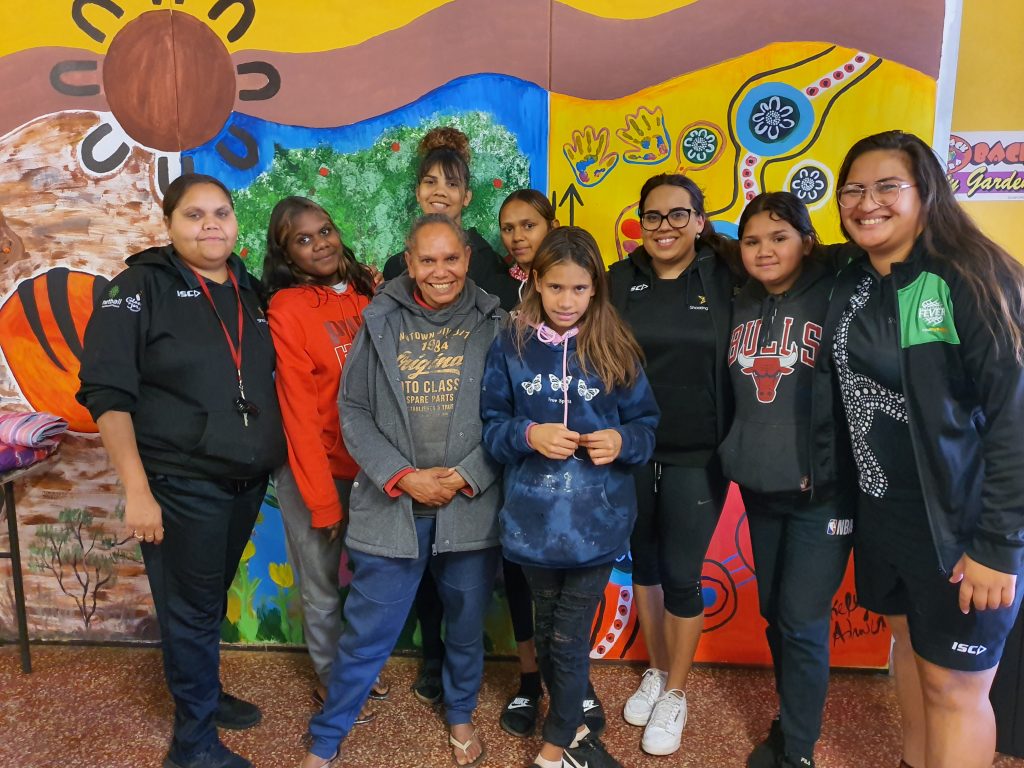
Shooting Stars (SS) is an initiative by Glass Jar Australia and Netball WA that is designed to increase school attendance for Aboriginal and Torres Strait Islander girls living in WA’s remote towns and communities. Through the SS initiative, activities to encourage exercise, positive health and wellbeing, leadership and cultural connection are nourished.
Using a $10,000 Strengthening Rural Communities (SRC) grant through the Small and Vital stream, two Shooting Stars Cultural Reward Camps were able to be funded. Twenty-five girls aged between 10-16 were invited to participate in two activity-based camps on Kija / Jaru Country. In order to participate the girls were required to demonstrate an 80% or above school attendance rate or show an improvement in attendance by 20% or more from the previous term. These requirements not only increase participation at school but also help the girls to feel they have worked hard for the achievement.
The grant, which was generously funded by the Karpikarnpi Community Fund, allowed camping equipment and food, recording equipment for the yarning circle and the transport of two Shooting Star Program facilitators: the Sparks Coordinator and Pathways Coordinator.
During the two camping days seven activities took place which included traditional jewellery making, damper made three ways, a yarning circle for the girls to discuss successes and challenges over the term, a basket weaving session, an art mural class, a healthy eating and nutrition workshop and a wellbeing session with the Shooting Star Program Facilitators.
Due to the COVID-19 pandemic, changes were made to the original plan. However, the Shooting Stars initiative was able to adapt to hold an engaging and positive camp for the girls who all responded positively to the camp.
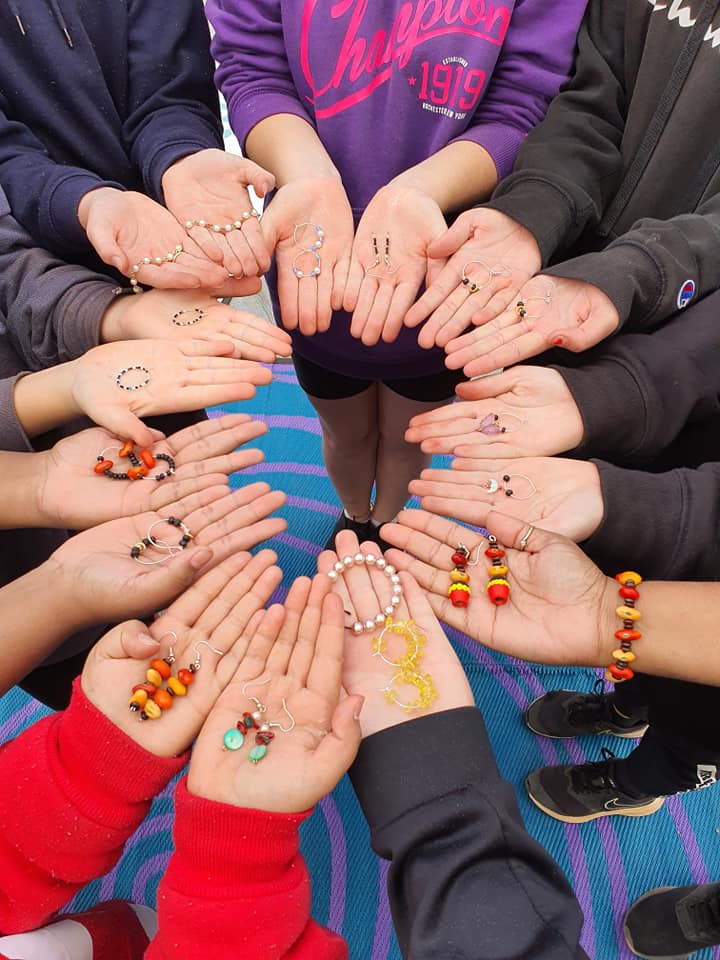
Anam Cara House Colac is a community owned hospice established to provide respite, palliative care and end of life care for the people of South West Victoria on Gulidjan Country. Carers, family and friends who support their chronically ill loved ones with at-home care commonly experience compassion fatigue when they are tasked with delivering the bulk of care requirements.
Supporting these carers, alongside improving the comfort of chronically ill community members, were the key drivers behind what Anam Cara House Colac aimed to achieve with their project. Community members who are either ill themselves or caring for others are often confused and/or unaware of available support services that could assist them to maintain their independence or live their lives more comfortably. For many, it is a time of vulnerability and fear, and having knowledge of, and access to, available services is critical.
Anam Cara House Colac received a $5,000 Gardiner Foundation Community Grant to run a series of three focused information sessions for community members living with, or caring for those affected by, life-limiting conditions.
Guest speakers from local health services, as well as a representative from My Aged Care, provided up-to-date and relevant information that is helpful and/or necessary to support someone with a chronic illness to live in a supported way that maximises independence. The choice of speakers was developed on the basis of anecdotal feedback from users of Anam Cara’s services.
Naomi Lettieri, Anam Cara’s Community Liaison Nurse, said that they experienced challenges with a slightly lower uptake than was expected, and they responded by involving the local radio station.
Anam Cara contacted Otway Community Radio (OCR), who agreed to record the second and third sessions. In doing so, they were able to reach more people, especially those who were unable to leave home due to their caring commitments. The sessions were aired both by OCR and shared on Anam Cara’s Facebook page as a podcast.
The grant covered the costs of advertising, catering, resources, and provision of respite to those who require it, with a portion directed to wages for planning and implementation of the events. It also included follow up for those in need, whether it be with advance care planning support or assistance in referral to other services.
Thanks to Anam Cara House Colac and the generosity of the Gardiner Dairy Foundation, this project allowed those in need to access information on caring for either themselves or those with chronic illness.
In this quarter’s update for FRRR’s donor partners, read about:
- Heads up on the findings of the Heartbeat of Rural Australia study
- BE INSPIRED: Thallon ‘back from the brink’
- Donor Spotlight: Pinnacle Charitable Foundation
- Insights from the bush
- Our progress, with your support
- Partnering Opportunity – Supporting volunteers through SRC
- Grants in Action: Bermagui’s collective approach to preparedness
- Community Partner Spotlight: Housing Matters Action Group
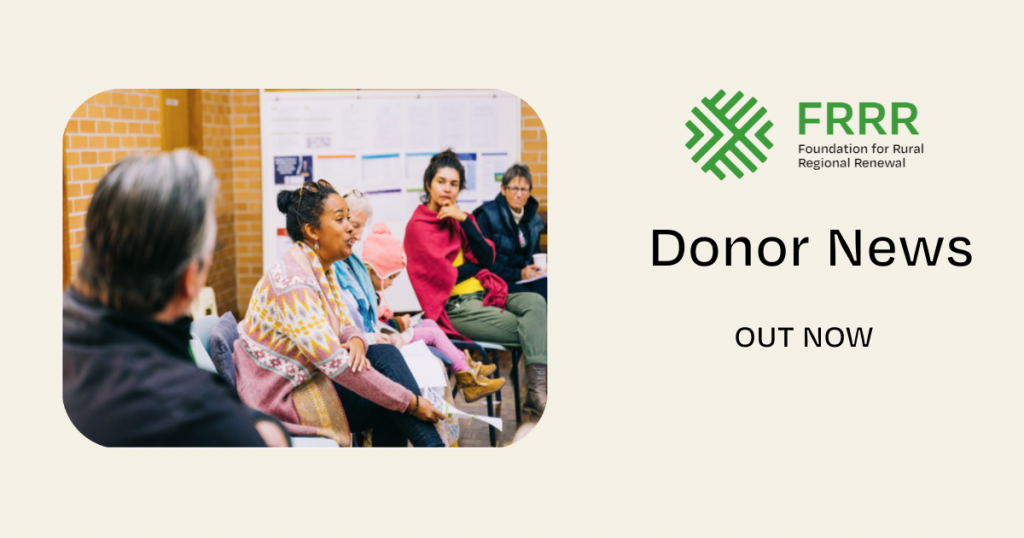
Spirit of charity shines bright in a tough year to help rural communities adapt and evolve
A unique Australian charity significantly increased its year-on-year grantmaking, giving remote, rural and regional communities across the country a much-needed funding boost as they adapted to the impacts of natural disasters and COVID-19.
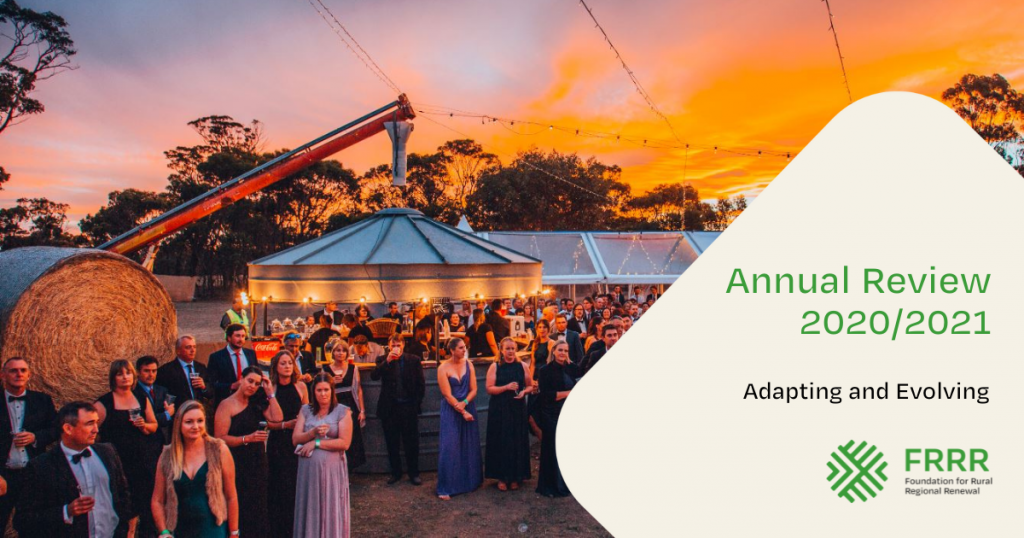
FRRR (the Foundation for Rural & Regional Renewal) supports small not-for-profit organisations across rural Australia through a mix of grant funding and capacity building activities. Their aim is to ensure local grassroots groups have the tools and support they need to implement projects that strengthen and sustain the vitality of their communities, and their organisations.
Last financial year, FRRR awarded nearly $20 million through 917 grants, an increase of around a third on the prior year. A significant portion ($4.1 million) went toward 203 recovery projects in communities impacted by the Black Summer bushfires, who were also grappling with economic and social fallout of COVID-19.
For the last 20 years, FRRR has created collaborative partnerships with Government, philanthropy, business and private funders to provide support to local organisations to fill the gaps, and address inequities in services in these areas and, critically, to strengthen community resilience.
Despite it being a tough year, everyday Australians and the philanthropic sector in particular continued to give, enabling FRRR to reach some of the smallest and most remote communities.
FRRR CEO Natalie Egleton said that while many grants to community groups are project-based, last year, in response to community needs, the organisation adapted its approach to also support more operational costs.
“The places we support are really small communities – sometimes just tens or hundreds of people – and so very few volunteers carry a lot of the load. Between the impacts of bushfires, drought, floods and COVID-19 restrictions, traditional fundraising was simply not possible. We were able to step in and support projects in more than 540 different postcodes across the country.
“With these communities being so resourceful, most projects don’t actually need all that much funding. In fact, our median grant was only around $13,000. While that figure has increased over time, we still award many grants that are just a few thousand dollars.
“It’s surprising just how big an impact can be created with relatively little, especially when people come together and given collaboratively, as they have this year,” Ms Egleton said.
“While it’s been a tough 12 months, thanks to the support of our corporate and philanthropic partners, and hundreds of individual donors, we are proud to have been able to sustain and indeed strengthen many rural communitites,” Ms Egleton concluded.
FRRR’s FY2020/21 Annual Review is available at www.frrr.org.au/AR21.
Nearly $700,000 in funding awarded to local community groups
Funding announced by FRRR today, is helping local community groups in Junee and Nambucca Valley to carry on their operations, despite multiple disruptions, by funding staff, developing efficient processes and boosting their capabilities through collaboration and technology.

Fourteen local not-for-profits (NFPs) are sharing $695,166 in grants, which will strengthen how their organisations function, and bolster the ways in which these groups can support their communities.
Funded by FRRR, in partnership with Vincent Fairfax Family Foundation (VFFF), Investing in Rural Community Futures (IRCF) is a five-year program designed to provide local NFPs with the tools and support they need to make lasting impacts in their areas of focus for the community. As part of the program, FRRR worked with the groups to create a tailored NFP sector roadmap, reflecting their shared goals. This funding and other ongoing support, including local facilitators on the ground, is helping bring these plans to life.
Nancy Sposato, FRRR Program Manager, said that the IRCF program, now in its third year, gives participating not-for-profits the opportunity to identify common issues and develop local strategies that will support their long-term sustainability.
“Through these grants, we have supported six organisations we’ve previously funded, alongside eight new organisations. This package really shows a deeper understanding and sophistication in how organisations are approaching capacity building,” Ms Sposato explained.
“At this point in the program, it is fantastic to see collaborations and sector alliances building within each community. A great example of this is support for Unkya Local Aboriginal Land Council in the Nambucca Valley, who will deepen First Nations NFP sector collaboration and support key leaders to develop a cultural-competency induction package.
“Local employment continues to be a key capacity building measure in supporting stability and sustainability, particularly considering COVID related disruptions. For example, Junee Business and Trades will be able to employ a part-time grants officer, which will make it easier for local NFPs to apply for funding to support local projects. These grants also respond to the need for technology system and small-scale infrastructure upgrades, further enhancing organisational efficiency.
“We look forward to continuing to work with Junee and Nambucca Valley NFPs, and continuing to support them as they implement their unique roadmaps,” Ms Sposato, said.
In addition to Junee and Nambucca Valley, the rural community of Leeton is taking part in the VFFF-funded IRCF program. FRRR has also partnered with The Snow Foundation to expand the program into the Shoalhaven communities of Batemans Bay, Nowra and Ulladulla. In June, FRRR partnered with Bendigo Bank’s charitable arm, Community Enterprise Foundation to further expand the IRCF program into the Bay and Basin region.
For more information about the Investing in Rural Community Futures program visit – https://frrr.org.au/ircf-program/.
The full list of grant recipients and their projects are below.
| Organisation | Project | Grant | ||
|---|---|---|---|---|
| JUNEE | ||||
| Junee Business & Trades Incorporation | Appoint a Grants Officer Enable local Junee NFPs to access funding to support local projects through the employment of a part-time grants officer position. | $118,959 | ||
| Junee Community Centre Inc | Subsidy for Centre Manager Sustain the Junee Community Centre by subsidising the centre manager role to support organisational governance, partnerships, and strategy development. | $140,000 | ||
| Junee Community Power Inc | Junee Community Circular Fund (JCCF) Alleviate energy poverty by providing additional support to the Junee Circular Fund to facilitate completion of the installation of solar power to the Junee Senior Citizens Hall. | $47,508 | ||
| Junee Hostel for the Aged Inc | Modernise Aged Care for Junee | $49,706 | ||
| Regional Heritage Transport Assoc - Junee Inc | Moving the Junee Roundhouse Museum into the 21st Century Strengthen the capacity of the museum to operate more effectively with the installation of electronic software and appropriate hardware. | $25,724 | ||
| Riverina Working Equitation Incorporated | Illabo Showground Combined User Group Strategic Planning Enable the Illabo Showground's combined user group to develop a strategy for the future sustainability of the grounds. | $3,580 | ||
| NAMBUCCA VALLEY | ||||
| Bowraville Community Development Association Incorporated | Surveying the Bowraville NFP Community About the Future Use of the Pioneer Community Centre Strengthen the use of the Bowraville Pioneer Community Centre by surveying the Bowraville community organisations to determine future use. | $13,750 | ||
| MiiMi Aboriginal Corporation | Gumbaynggirr Receptionist | $54,470 | ||
| Mujaay Ganma Foundation Aboriginal Corporation | Yuraal Guunumba Ngurraay: Gumbaynggirr Native Foods Community Garden Project STAGE 2 Continue to foster community engagement, organisational capacity, and share cultural knowledge by engaging trainee coordinators and mentors to sustain the Mujaay Ganma's Yuraal Garden Project. | $31,173 | ||
| Nambucca Heads Mens Shed Inc | Exploring Energy Options Increase organisational capacity and save operational costs for community organisations by exploring the viability of using renewable energy to help sustain not-for-profit organisations in the Nambucca Valley. | $11,000 | ||
| Nambucca Valley Council | Local News Shared Strengthen the collaboration of the local community newsletter committees of the Nambucca Valley to build capability, share content and amplify the voice of young people across the Valley. | $43,292 | ||
| Nambucca Valley Phoenix Limited | Investing in Strategy - Building a Sustainable Social Enterprise Building a Sustainable Social Enterprise. Strengthen the capacity of the organisation to deliver on their new Strategy and aspiration to become a sustainable social enterprise by strengthening their brand and supporting staff. | $47,000 | ||
| ShoreTrack Ltd | ShoreTrack MOS (Management Operational System) Enable ShoreTrack Ltd to develop an internal operational management system to maximise the organisation’s capacity and operationalise their strategy. | $36,300 | ||
| Unkya Local Aboriginal Land Council | Jinda biin duguula (Sisters Together) To deepen First Nations NFP sector collaboration and to support key leaders to develop a cultural competency induction package. | $72,704 | ||
The traditional owners of Gunbalanya is the Gumurdul family who allow Injalak to operate on their land and are actively supportive of the art centre.
About 500 km from Darwin, you can find the region of Arnhem Land, in the Northern Territory. For six months of the year, you can cross the East Alligator River to Gunbalanya. For the remainder of the year, the river is too high, cutting Gunbalanya and the 1,200 people that live there, off from the rest of the country.
Like many First Nations communities, Gunbalanya is rich with culture and heritage, with a strong desire to pass on this traditional knowledge, particularly among young people. Indigenous community art centres play an important role in the artistic and cultural life of traditional Aboriginal artists living in remote communities.
Gunbalunya’s Injalak Arts centre in West Arnhem Land supports over 350 Indigenous Kunwinjku artists. They provide professional development programmes, workshops, mentoring support and On Country trips to collect art materials. Pre-COVID times, thousands of tourists would visit Injalak Arts every year to witness the art, music, natural environment, and many other culturally significant activities.
In the midst of COVID restrictions, with no visitors to the region allowed, Injalak Arts ran a two-week music workshop and a week-long live video production workshop that involved local musicians recording and rehearsing songs, as well as coaching and mentoring for eight members of the newly formed Media Unit who learnt all about live production. Thanks to a $10,000 Strengthening Rural Communities grant, funded by the Tim Fairfax Family Foundation, Injalak Arts was able to pay artist and consultation fees with Indigenous Australians who led the workshops.
The COVID-19 restrictions, and subsequent absence of any visitors to witness the performance, weren’t an issue for the production team, as the Media Unit used iPhones and iPads to stream the performance. People across the country were able to tune in, with some even watching from the UK.
The project brought the community together and provided an opportunity to demonstrate their creative expertise and talents, as well as developing new skills in live television production.
Injalak Arts’ Culture and Media Officer Alex Ressel explained the grant has had ongoing benefits for the community.
“We have since utilised this experience and equipment on other video projects in western Arnhem Land, so it is not necessary to employ external camera operators to document and live stream cultural events in western Arnhem Land.
“When bininj (Indigenous) people are behind the camera as well as in front of it, a radically different form of moving image work is created, enabling a culture to define its own mode of representation, ask the right questions.
“It means we can employ local Indigenous people and keep money circulating within community, as well as making the representation of Kunwinjku culture to wide and diverse audiences.”
Yuin Nation
Professional artists from the Bega Valley are invigorating Pambula Village with vibrant and colourful large-scale artworks, thanks to a bushfire recovery initiative.
Six commissioned pieces now complement a 22-site historic walking tour and are providing a boost to morale, employment and tourism.
The Bega Valley LGA was among the most impacted by the 2019/20 Black Summer bushfires, with 465 houses destroyed, 1,279 rural landholders impacted and around 60 per cent of the area burnt. Pambula has also experienced drought and COVID-19. The cumulative effects of all this have resulted in the loss of livelihoods, employment, prospects, wealth, environment, sense of security and mental wellbeing.
The Waislitz Family Foundation, in partnership with Australian Community Media, joined forces with FRRR after the Black Summer bushfires to support recovery. The Pambula arts project was granted $25,000 through FRRR’s Strengthening Rural Communities program, funded by the Waislitz Family Foundation in partnership with Australian Community Media.
Pambula Business Council President Michelle Pettigrove said the road back from the region’s losses is long and daunting and the ongoing Pambula Art Project gives this community a strong sense of unity, pride and direction.
“There is a discernible buzz on the street, tourists talk about the great community spirit of the town,” she said.
Artists get to exhibit their work to a large audience while helping increase Pambula’s profile and attract visitors to the Village and extended Bega Valley region. It’s boosting sales for local businesses and creating a more culturally vibrant community.
The Art Project was also mentioned frequently by voters when Pambula was named a finalist in the NSW Small Top Tourist Town awards.
While many buildings in Pambula have some historic significance, plain brick walls of newer buildings were identified as perfect ‘canvases’. Some artworks were painted directly onto buildings, and a clever solution using Laminex and aluminium panels meant others could be installed to building facades without causing damage.
Ms Pettigrove said the artworks were not designed to overpower the existing streetscape “but rather to illuminate and amplify Pambula’s historic, cultural and environmental identity, including the history and connection to country of the Yuin People – the original custodians of our region”.
A self-guided history walking tour map has also been produced, featuring 22 of Pambula’s historic buildings and sites to shine a spotlight on the fascinating and quirky history of the village and local identities. Pambula was the birthplace of Sir William McKell, the second Australian-born Governor General, and his home is now an art gallery. Syms Covington, who served with Sir Charles Darwin on ‘The Beagle’ retired to Pambula and continued to send Darwin samples of Australian flora and fauna for many years. Covington then served as postmaster in Pambula and his house is now a popular restaurant/gallery.
Future plans for the project include adding and celebrating more Yuin Nation history in the original self-guided History Walk, following ongoing extended consultation with both the Bega Aboriginal Land Council and the Twofold Aboriginal Corporation.

